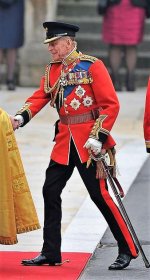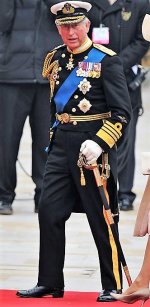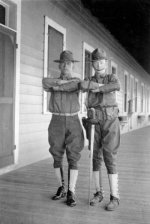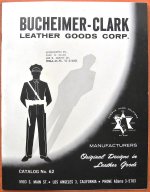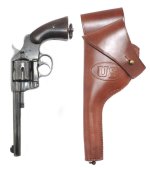I am getting along in years, but I was not a Union Army Officer
in the Civil War. Both the hat and the 1860 Army Colt are replicas.
The holster appears to be left handed, but it's not. Actually
officers and cavalry troopers carried their holstered revolver on
the strong side with butt forward.
Officers carried their swords, and cavalry troopers their sabers,
on their weak side for a strong side cross-draw. With the sword
or saber in their strong hand they could pull their revolver with
their weak hand cross-draw. They could use the so called
"cavalry draw" if their sword or saber was in it's sheath.
The cavalry draw involved twisting the strong side hand to
an inverted position, with palm out, to grasp the stock and
draw the revolver.
It wasn't until early 1900s that our military went to the
conventional butt-back carry that we see almost always today.
If you hold your curser on the thumbnail a photo will appear.
Then you can enlarge the photo by clicking once or twice.
in the Civil War. Both the hat and the 1860 Army Colt are replicas.
The holster appears to be left handed, but it's not. Actually
officers and cavalry troopers carried their holstered revolver on
the strong side with butt forward.
Officers carried their swords, and cavalry troopers their sabers,
on their weak side for a strong side cross-draw. With the sword
or saber in their strong hand they could pull their revolver with
their weak hand cross-draw. They could use the so called
"cavalry draw" if their sword or saber was in it's sheath.
The cavalry draw involved twisting the strong side hand to
an inverted position, with palm out, to grasp the stock and
draw the revolver.
It wasn't until early 1900s that our military went to the
conventional butt-back carry that we see almost always today.
If you hold your curser on the thumbnail a photo will appear.
Then you can enlarge the photo by clicking once or twice.
Attachments
Last edited:


